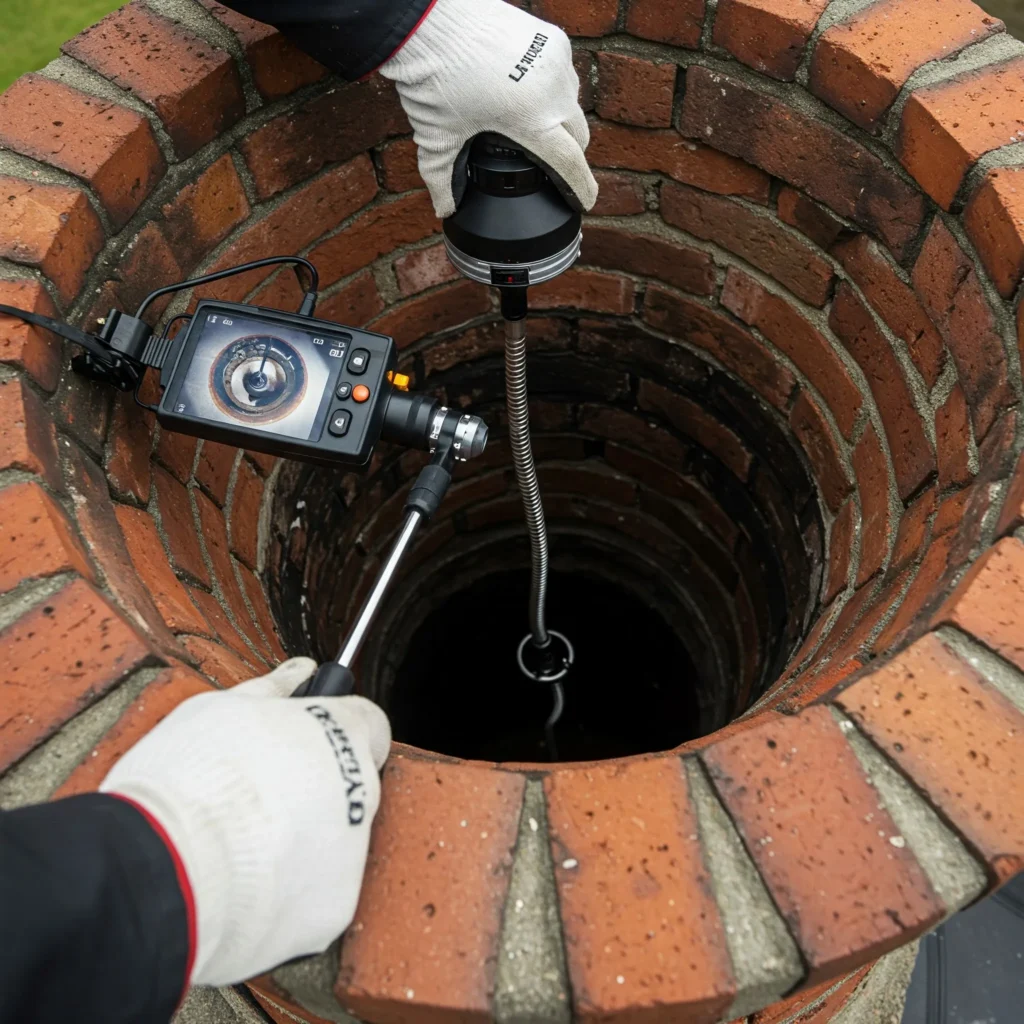Keeping your chimney in great shape protects your home’s safety and improves heating efficiency. Regular inspections prevent fires, structural damage, and air quality issues. This guide will help you check your chimney and keep it in top condition.
You might like: Does Homeowners Insurance Cover Your Home’s Foundation? What You Need to Know
Table of Contents
ToggleWhy Chimney Inspections Matter
Neglecting chimney maintenance can lead to serious problems, including:
Fire hazards: Creosote buildup can ignite and spread flames quickly.
Carbon monoxide poisoning: Blocked flues can push toxic gases into your home.
Structural damage: Cracks and leaks weaken the chimney, leading to expensive repairs.
Poor heating efficiency: A clogged or damaged chimney reduces heat output.
Signs You Need a Chimney Inspection
Knowing when to inspect your chimney helps you avoid costly repairs and safety risks. Watch for these warning signs:
Smoke entering your home: A blocked or poorly venting chimney can push smoke indoors.
Strong odors: A musty or smoky smell could indicate creosote buildup or moisture problems.
White stains on the chimney (efflorescence): This signals excess moisture, which can weaken the structure.
Cracked or missing mortar: Gaps in masonry allow water to seep in and cause further damage.
Fires or sparks inside the chimney: These are signs of dangerous creosote buildup.
Water leaks near the fireplace: Stains on walls or ceilings suggest flashing or structural issues.
Difficulty starting fires: Poor airflow or blockages can make lighting a fire a challenge.
How to Inspect Your Chimney
1. Follow Industry Standards
Experts recommend regular chimney inspections. The National Fire Protection Association (NFPA) and Chimney Safety Institute of America (CSIA) define three levels of inspection:
Level 1: A basic visual check for routine maintenance.
Level 2: A deeper inspection using tools, often required after severe weather or before selling a home.
Level 3: A full examination that may involve removing parts of the chimney or nearby structures.
2. DIY Chimney Inspection Steps
Even though professionals should inspect your chimney yearly, you can perform a basic check yourself.
Checking the Exterior
Look for cracks or missing bricks: These let moisture in and weaken the structure.
Check the chimney cap: Make sure it’s intact and free of debris.
Inspect the flashing: Rust or gaps where the chimney meets the roof could lead to leaks.
Inspecting the Interior
Shine a flashlight inside the flue: Look for soot buildup, cracks, or obstructions.
Test the damper: It should open and close smoothly.
Check for smoke stains: Stains around the fireplace could mean a drafting issue.
Common Chimney Problems and How to Fix Them
Even with regular inspections, chimney issues can arise. Here’s how to address common problems:
Creosote buildup: This highly flammable residue forms from burning wood. Fix: Schedule regular chimney sweeps to remove it and reduce fire risk.
Cracked or missing bricks: Over time, bricks and mortar deteriorate. Fix: Use masonry sealant for small cracks and call a professional for larger repairs.
Chimney leaks: Water damage weakens the structure. Fix: Inspect and replace damaged flashing, and apply a waterproof sealant.
Blockages: Birds, leaves, and debris can clog the chimney. Fix: Install a chimney cap to keep debris out and inspect it regularly.
Drafting issues: Poor airflow can push smoke into your home. Fix: Ensure the damper is fully open and consider installing a chimney liner.
3. Keep Your Chimney Safe and Efficient
Good maintenance boosts both safety and heating performance. Here’s what you can do:
Clean it regularly: Hire a chimney sweep to remove creosote buildup.
Install a chimney cap: This prevents animals, debris, and rain from entering.
Ensure proper airflow: Good ventilation prevents smoke and carbon monoxide buildup.
4. Helpful Tips for Homeowners
To make this guide easy to find and useful, we focus on popular topics and keywords:
Main Topics: Chimney inspection, chimney maintenance, home safety
Related Searches: Creosote buildup, fireplace safety, chimney sweep
Best Practices:
Use clear headings for easy reading.
Link to other helpful guides like “fireplace maintenance” or “home heating tips.”
Add images with descriptions like “Chimney inspection checklist.”
When to Call a Professional
If you notice heavy creosote buildup, leaks, or structural damage, reach out to a certified chimney sweep for a professional inspection.
FoundationMD: Your Partner in Home Safety
At FoundationMD, we specialize in ensuring the safety and integrity of your home’s structure. A well-maintained chimney is just one aspect of home protection. Our experts can help identify and address foundational concerns, moisture issues, and structural weaknesses that could affect your chimney and overall home stability. Contact FoundationMD for a comprehensive home evaluation and expert solutions. Call us at 1-800-Structure today!
Final Thoughts
Regular chimney inspections keep your home safe and warm. By staying proactive, you can prevent costly repairs and enjoy a cozy fire year-round.






